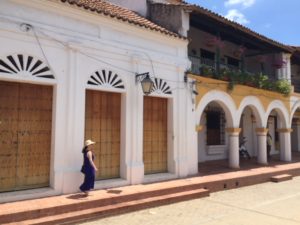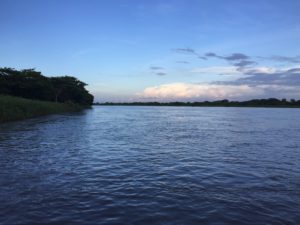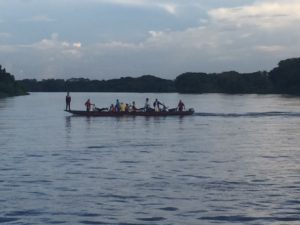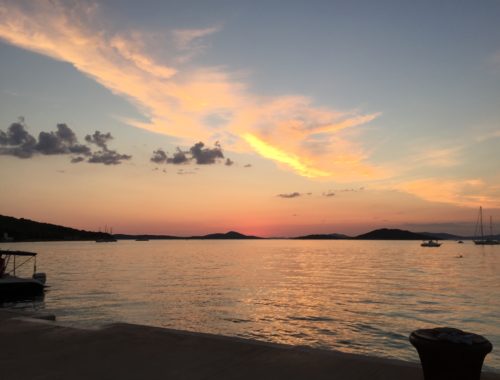
Colombia: Chasing the Footprints of Gabriel García Márquez
Colombia is a very special place for me. My husband was born and raised in Cali and spent his adolescence and college years in Barranquilla and Bogotá, respectively. I’ve had the opportunity to travel extensively throughout the country and I have been enamored with the small towns and villages that see little foot traffic from foreigners. While Colombia has a wealth of resources, an exceptionally high literacy rate and is often listed as one of the happiest countries, there is nothing more special than traditional stories and folklore offered up by the locals; preferably over a cup of coffee. Yet, this trip felt different.
After watching the documentary Gabo: The Creation of Gabriel García Márquez, my husband and I were determined to chase his footsteps and experience his creative genius, which was heavily influenced by his birth town of Aracataca, and by the wider Caribbean region along the Magdalena River. To be honest, until stepping foot in this region and seeing the sheer size of the river, I never really understood the term magical realism even though I’ve read a number of his books. However, implanting myself in this region, I quickly realized it’s not about the definition, term or genre of literature – magical realism is a feeling that engulfs your soul.
Our journey began with an amazing, typical lunch right by the river, at a restaurant called El Proveedor in Barranquilla. While the company and food were delightful, the view took my breath away instantly. It may seem like nothing special in a picture, but what captivated me most was the slightly foggy, damp, mystical feeling. The strong breeze was no friend to my unmanageable vacation hair. At this moment, as a non-local, I was just beginning to grasp the magnitude that the river had on this region and its people. On the surface, the river is the local livelihood, offering transportation, industry, botanical science, swimming and bathing, but deep down it drives the spirit and essence of the region.
Next, we visited Barranquilla’s Malecón Bicentenario, a historic area re-envisioned to bring the river’s past into the future. It’s an innovative, architectural and urban planning marvel that was years in the making. This massive boardwalk boasts 270 meters of scenic walkway offering 20,000 square meters of public, sports and recreational space for locals and visitors alike. The space also supports local flora and fauna found in the region. The modern vision of reinventing Barranquilla’s river infrastructure has increased economic opportunity, re-energized the local community and put this Caribbean town on the world map. Development and tourism continue to flourish in this area and I don’t see it stopping any time soon. In fact, not far from here there are two museums currently under construction: Barranquilla’s own Modern Art Museum and the Caribbean Museum. This is sure to bring a vibrancy to this less popular part of town. In the fast-paced age of development and technology, it is not difficult to feel the beautiful recreation of the river’s past influence as it moves into the present.

Our journey continued to the island town of Mompox in the state of Bolivar, in the middle of the Magdalena river. This town is a colonial architectural gem and has been designated a World Heritage UNESCO site. The island is well known for its goldsmithing art of Filigrana and the many stops that the Simon Bolivar did during his independence fight against the Spanish crown. In fact, one of his famous quotes is “If to Caracas I owe my life, to Mompox I owe my glory.” You can see reference to this quote and the many places that Simón Bolívar visited throughout the small island.


The enchanting feeling of this island town along the river only grew as our two-hour walking tour (of a nearly six block radius) turned into a six-hour walking tour. Our guide, Juán, is a well-known local from The Office of Cultural Affairs of Mompox. He was quite versed in the local history, folklore and legends, and wholeheartedly embraced our endless questions. Having a guide only increased the richness of our experience as we walked the streets craving to know every detail. You see local art, small details, depicted throughout the town referring to Gabriel García Márquez’s influence in this region as well. For me, the pieces of magical realism were slowly coming together, and the presence of his footsteps were palpable.


One of my favorite things that we experienced was a visit to local Filigrana workshop to learn more about this traditional art / handcraft. Filigrana has an international reputation as each piece is made by hand with a high purity of gold or silver. The art is described as a mix of pre-Columbian aboriginal techniques and the techniques inherited by the Spanish colonizers with a notable Arab influence. The particular shop we visited, Joyería Ginna Filigrana Momposina, is known for their exceptionally unique designs as the former President Juan Manuel Santos commissioned a gift of Filigrana on behalf of Colombia to Queen Elizabeth II of the United Kingdom.
If you are interested to learn more about Filigrana, please check out this link.
The last part of our time in Mompox was spent cruising down the Magdalena and seeing the full glory of the most important river in the country. It is truly stunning. As the sun set we sat in wooden rocking chairs on a barge listening to local music. Dancing, singing and laughing from our cruise radiated through the tiny towns along the river beds and the locals came out to smile and wave. It was in this moment that I truly felt the essence of magical realism. The view, the people and this experience were hypnotic and gave me a glimpse into a world I only knew previously through words.


What matters in life is not what happens to you but what you remember and how you remember it.
― Love in the Time of Cholera
You May Also Like

Croatia: Not Your Typical Game of Thrones Tour – Part I
August 15, 2018
A Walk and some Words to Live by
June 17, 2019

